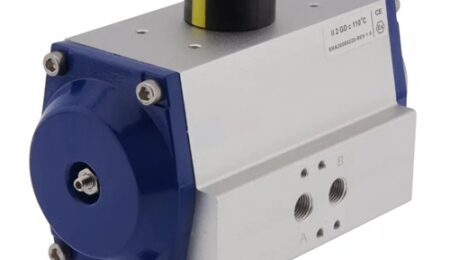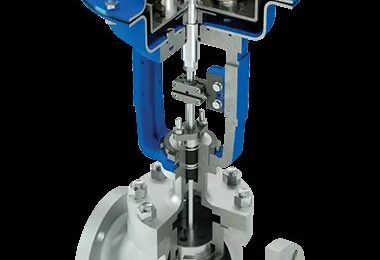We are a leading control valve manufacturer in China, delivering high-performance valves and control actuators engineered to meet a wide range of industrial applications.
Key Factors in Actuator Selection
To select the most appropriate actuator for a butterfly valve, the following factors must be considered:
-
Frequency of Operation
For infrequent use—such as during maintenance or emergency shutoffs—a manual actuator is usually adequate. For frequent or automated operations, electric, pneumatic, or hydraulic actuators are more appropriate. -
Valve Size and Torque Requirements
Larger valves require greater torque to operate. Manual actuators become impractical at larger sizes, often requiring a gearbox. Pneumatic and hydraulic actuators are better suited for high-torque applications. -
System Pressure and Media Characteristics
High-pressure systems or those involving viscous or abrasive media benefit from hydraulic actuators due to their superior force and durability. Pneumatic actuators are also effective in such environments but require clean, dry air. -
Response Time
Pneumatic actuators provide rapid response, ideal for emergency shutoffs or dynamic process control. Electric actuators, while slower, offer superior accuracy and control. -
Power Source Availability
The choice of actuator often depends on the availability of electricity or compressed air. Manual actuators are ideal in remote locations where power is unavailable. -
Environmental Conditions
Harsh environments—such as areas with high humidity, dust, or explosive gases—may limit the use of electric actuators. Pneumatic and hydraulic options are often more robust in these scenarios. -
Cost Considerations
Manual actuators are the most cost-effective, followed by electric, pneumatic, and hydraulic types. While automated actuators have higher upfront costs, they can lower operational costs and improve efficiency over time.
Types of Butterfly Valve Actuators
1. Manual Actuator
Overview:
Operated by hand using a lever, handwheel, or gearbox, manual actuators are ideal for simple or infrequently used systems.
Features:
-
No external power required
-
Simple installation and maintenance
-
Gearbox options for large valves
Applications:
-
Water distribution
-
HVAC systems
-
Irrigation
-
Emergency shut-off points
Pros:
-
Low cost
-
Fail-safe in static position
-
Ideal for remote or power-limited locations
Cons:
-
Not suitable for automation
-
Requires manual effort
-
Limited use in large or pressurized systems
2. Electric Actuator
Overview:
Electric actuators use an electric motor to drive the valve. They are suitable for automated and precise flow control.
Features:
-
AC or DC power options
-
Position indicators and torque limiters
-
Remote control and monitoring capabilities
Applications:
-
Water treatment plants
-
Pharmaceutical and food processing
-
Building automation
Pros:
-
Highly accurate and programmable
-
Quiet operation
-
Ideal for modulating control
Cons:
-
Slower than pneumatic types
-
Not suitable for wet or hazardous environments
-
Higher initial cost
3. Pneumatic Actuator
Overview:
These actuators use compressed air to move a piston or diaphragm, offering rapid and repeatable movement.
Features:
-
Fast response
-
Available in double-acting and spring-return types
-
Easily integrated with automation systems
Applications:
-
Chemical processing
-
Power generation
-
Oil and gas infrastructure
-
Fire safety systems
Pros:
-
Quick and consistent actuation
-
Lightweight design
-
Reliable in harsh or hazardous conditions
Cons:
-
Requires a clean, dry air source
-
May be noisy
-
Potential for air leaks over time
4. Hydraulic Actuator
Overview:
Hydraulic actuators use pressurized fluid to move a piston, generating high torque for demanding operations.
Features:
-
High-force output
-
Durable construction
-
Suitable for linear or rotary motion
Applications:
-
Marine and offshore
-
Mining and heavy industry
-
Large-scale water control
-
Steel and paper production
Pros:
-
Ideal for large valves and high-pressure systems
-
Performs well in extreme environments
-
Delivers smooth, powerful motion
Cons:
-
High cost and complexity
-
Requires regular maintenance
-
Susceptible to fluid leaks
Actuator Selection Summary Table
| Actuator Type | Power Source | Best For | Response Time | Automation | Cost | Harsh Environment Suitability |
|---|---|---|---|---|---|---|
| Manual | None | Small, infrequently used valves | Slow | No | Low | Fair (basic use only) |
| Electric | Electricity | Precision, indoor applications | Moderate | Yes | Medium | Poor |
| Pneumatic | Compressed Air | Fast, frequent automation | Fast | Yes | Medium | Excellent |
| Hydraulic | Hydraulic Fluid | Large valves, high-pressure use | Fast | Yes | High | Excellent |
Conclusion
Selecting the right butterfly valve actuator involves balancing application-specific requirements such as torque demands, operation frequency, environmental conditions, available power sources, and budget constraints.
Manual actuators offer simplicity and reliability for occasional use. Electric actuators provide precision control in environments with steady power. Pneumatic actuators deliver rapid and dependable operation in industrial settings. Hydraulic actuators excel in heavy-duty applications where high torque and durability are essential.
By understanding the strengths and limitations of each actuator type, engineers and system designers can optimize valve performance, reduce downtime, and ensure system reliability for years to come.Know more about Google SEO Directory



Leave a Reply